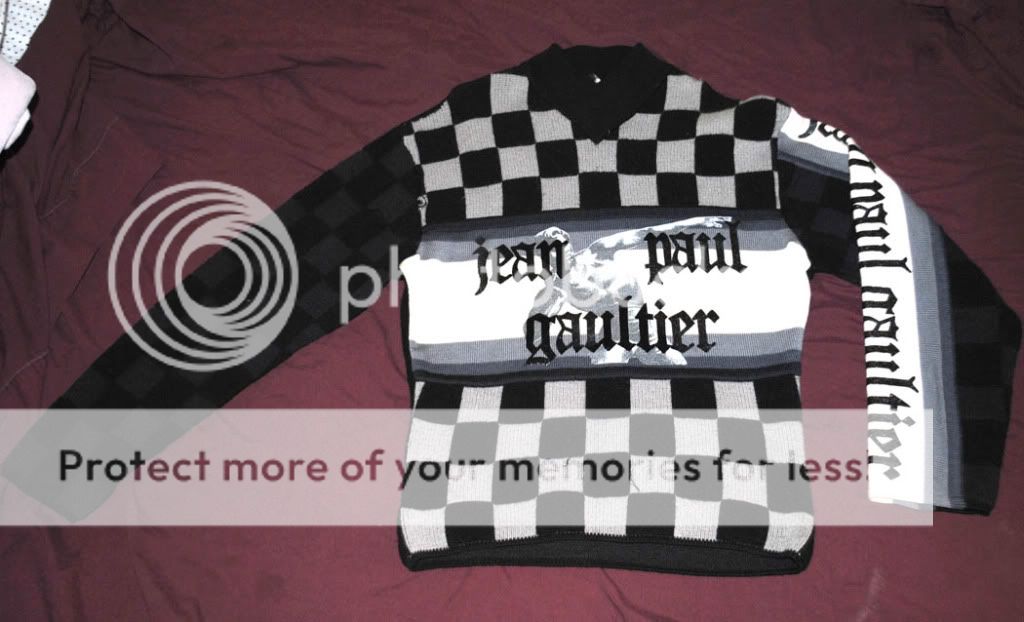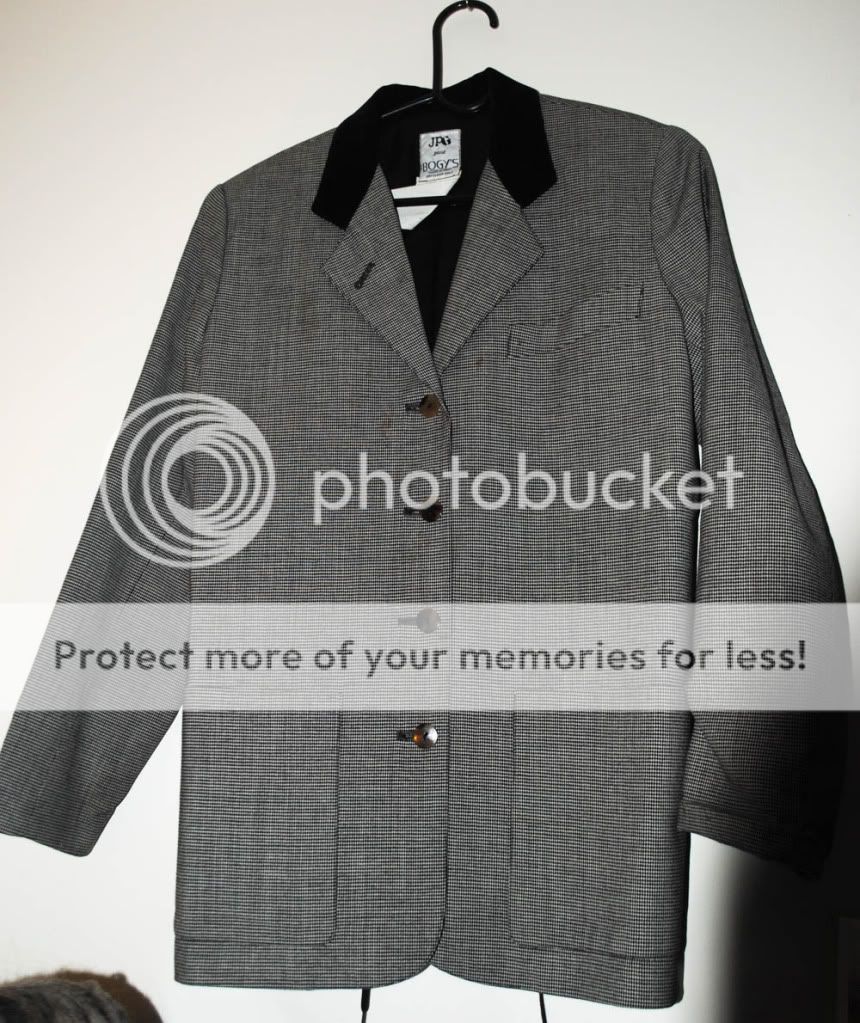ColorScreams
Member
- Joined
- Aug 4, 2009
- Messages
- 330
- Reaction score
- 1
Always love his designs!


bookrags.comBiography of Jean Paul Gaultier
French designer Jean Paul Gaultier (born 1952) became world famous for his avant-garde designs, usually first displayed in runway shows that are themselves media events.
Jean Paul Gaultier was born in France in 1952. Not interested in sports or any of the usual childhood pleasures, he was a prodigy when it came to fashion design. Young Gaultier designed a collection of clothing for his mother and grandmother at age 13. At age 15 he invented a coat with bookbag closures. When he reached the age of 17, he boldly sent his design sketches to Paris designer Pierre Cardin. Cardin appreciated his talents enough to hire the young man as design assistant. Gaultier worked for Cardin for two years. He then spent a year designing for Jacques Esterel before joining the House of Patou in Paris, working with designers Angelo Tarlazzi and Michael Goma for three years.
In 1976 several of Gaultier's sketches were published in Mode Internationale, a French fashion magazine. The sketches were favorably received by the design world. That same year Gaultier launched his design career under his own label for a company called Mayagor, as well as continuing to design free-lance ready-to-wear furs, swimwear, and leather clothing.
When Kashiyama, a well-funded Japanese clothing manufacturing conglomerate, caught wind of Gaultier's growing reputation, his career was launched. They signed him to an exclusive contract for men's and women's collections under his own name. Renowned as perhaps the most avant-garde fashion designer of his time, Gaultier was sometimes called the Prince of Perversity. He was known for keeping a keen winking eye on young London and New York street fashions, reinterpreting them with a dash of Parisian panache, then pushing them out on his runways. Some of his most recognizable cutting-edge designs are jackets, dresses, and jumpsuits with indiscreet cutouts that make the garments resemble cages. His unique designs also include dresses and tops with sliced open breasts and bra-like torpedo inserts, fichu off-the-shoulder tops, multi-colored Lycra, vinyl and leather bike pants, and kilt-ish skirts for men.
His always outrageous shows were held in an amphitheater that was actually a converted slaughterhouse outside of Paris. The shows were considered the media events of each fashion season partly because tickets for the collection were so coveted. Ultra-fashionable throngs of Gaultier groupies, dressed in both his latest and now-classic designs, and masses of the fashion press vie, sometimes violently, for seats to see his innovative, thought-provoking parade of new designs. Even nonfashion celebrities show up--actor Jack Nicholson, former model Verushka, singers Grace Jones and Neneh Cherry, and exiled film director Roman Polanski.
In 1997 Gaultier displayed couture for the first time in a Paris show. In an article in Interview, he stated that "We are in a world where many people are staying at home on the Internet, not doing anything. I think the moment now for couture is right because it's a small fantasy. It's special, and for only one customer at a time." Gaultier was the only designer in the show to feature couture for men as well as women. Also noteworthy in the 1997 Paris show were corsets for men. Gaultier rationalized in Interview that, "I am for equality of gender. I say there's couture for women, so why not for men"" Although Gaultier derived his inspiration for design from the street in the past, and couture is generally perceived to be in the realm of the elite, he attempted to respect the tradition of couture with fabrics not normally used in couture.
Gaultier has been known for using unique looking models in his shows of all different shapes, sizes and ages. In Interview he explained that, "I have never really cared about what fashion's ideal was. There are different kinds of beauty and I always try to show that."
In 1987 Gaultier received the coveted French designer of the year award. In 1988 he launched a lower-priced sportswear line called Junior Gaultier, at first carried exclusively in a small store located in Les Halles, a funky area of Paris, and later sporadically sold in U.S. department stores. His other store, located on the chic Right Bank of Paris, contained his men's and women's ready-to-wear bearing high price tags ($1,200 for a suit). These clothes were also carried in boutiques in New York, Los Angeles, and Miami. In 1990 Gaultier's talents were viewed by a wider, less fashion-conscious audience when he designed the entire wardrobe for the controversial British director Peter Greenaway film "The Cook, The Thief, His Wife and Her Lover." Long a fan of Greenaway's films, Gaultier and he decided that the clothing for this modern day morality play should change colors as the characters moved from set to set. Four sets of clothing were made: red for the dining room, blue for the parking lot, white for the bathroom, and green for the kitchen. One of his most devoted fans was singer Madonna, who on her 1990 Blonde Ambition international tour wore nothing but Gaultier suits with sliced open breasts covering a torpedo bra corset over menswear pants. She was also one of the first to adopt his lingerie-over-clothing trend in 1985.
In 1997, Gaultier collaborated with French movie director Luc Besson to design costumes for the movie "The Fifth Element," a futuristic sci-fi thriller. Although the film received less than enthusiastic reviews, the costumes were referred to as "body-conscious" and "outlandish" in reviews in National Review and People Weekly.
On June 15, 2000, Gaultier was given the International Award at the American Fashion Awards, presented by the Council of Fashion Designers of America.
Although Gaultier's designs are sometimes considered over-the-top, there is no question among the fashion historians or the retail fashion world that his multiple talents greatly influence the work of other designers. Gaultier imitations and sometimes blatant thefts of his somewhat insane designs often appear in more moderately priced department stores mere months after his runway shows.




The Fashion World of Jean Paul Gaultier: From the Sidewalk to the Catwalk
November 13, 2011–February 12, 2012
The first retrospective devoted to the designs of world-renowned French couturier Jean Paul Gaultier will make its U.S. debut at the Dallas Museum of Art in November 2011. Marking the first time that the DMA will present an exhibition dedicated to exploring the art of fashion, The Fashion World of Jean Paul Gaultier: From the Sidewalk to the Catwalk will provide an unprecedented look at the designer dubbed fashion’s “enfant terrible” from the time of his first runway shows in the 1970s and who has become one of the most important fashion designers of recent decades. Organized by the Montreal Museum of Fine Arts in collaboration with the Maison Jean Paul Gaultier, the exhibition will premiere in Montreal on June 15, 2011, and will be on view at the Dallas Museum of Art from November 13, 2011, through February 12, 2012, before traveling to its final stop in the U.S. at the Fine Arts Museums of San Francisco, de Young, in March 2012.
The exhibition—organized along five different thematic sections, including “Jean Paul Gaultier’s Paris,” “Fusions,” “Multi-Gender,” “Eurotrash/ X-Rated,” and “Metropolis”—will feature approximately 120 ensembles from the designer’s couture collections, as well as from his prêt-à-porter line, along with their accessories. Created between 1976 and 2010, the majority of these pieces have never been exhibited. Sketches, stage costumes, and excerpts from films, runway shows, concerts, dance performances and televised interviews will all provide a look at the couturier’s world and will explore how his avant-garde fashions challenged societal and aesthetic codes in unexpected, and often humorous, ways. Photography will also be a major focus of attention, thanks to loans of, in many cases, never-before-seen prints from renowned contemporary photographers and artists.
A substantial portion of the exhibition will also be devoted to the artistic collaborations that have characterized the world of Gaultier, including filmmakers (Peter Greenaway, Luc Besson, Caro and Jeunet, and Pedro Almodóvar) and contemporary choreographers (Maurice Béjart, Angelin Preljocaj and Régine Chopinot), not to mention the world of popular music, in both its French incarnations (Yvette Horner, Les Rita Mitsouko and Mylène Farmer) and international (Madonna, Kylie Minogue and Lady Gaga).
The Montreal Museum of Fine Arts will publish, in French and in English, a major monograph on the occasion of this exhibition. Featuring nearly 500 illustrations and photographs, the 424-page catalogue will include interviews with Gaultier’s colleagues, mentors and muses, as well as the artists he has worked with— among them Pedro Almodóvar, Catherine Deneuve, Farida Khelfa, Madonna, Martin Margiela, Pierre Cardin and Dita Von Teese—and will feature many previously unpublished illustrations from the maison Gaultier archives and other sources. It will include an essay written by Suzy Menkes, journalist at The New York Times and fashion editor of the International Herald Tribune, and two interviews with the designer himself, in addition to an interview with Valerie Steele, fashion historian and director of New York’s The Museum at FIT (Fashion Institute of Technology), as well as a timeline of Gaultier’s career and a complete bibliography.
Group tickets on sale now


